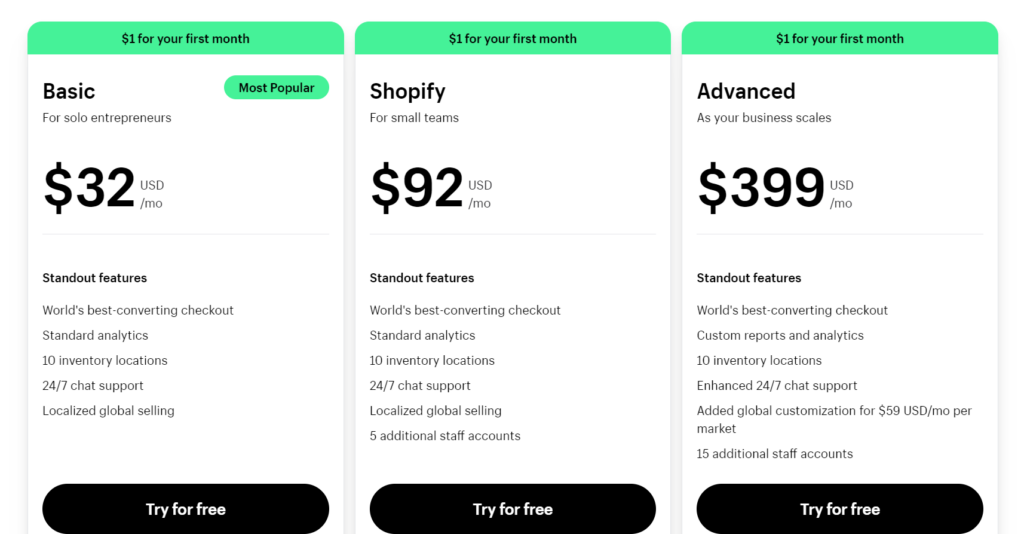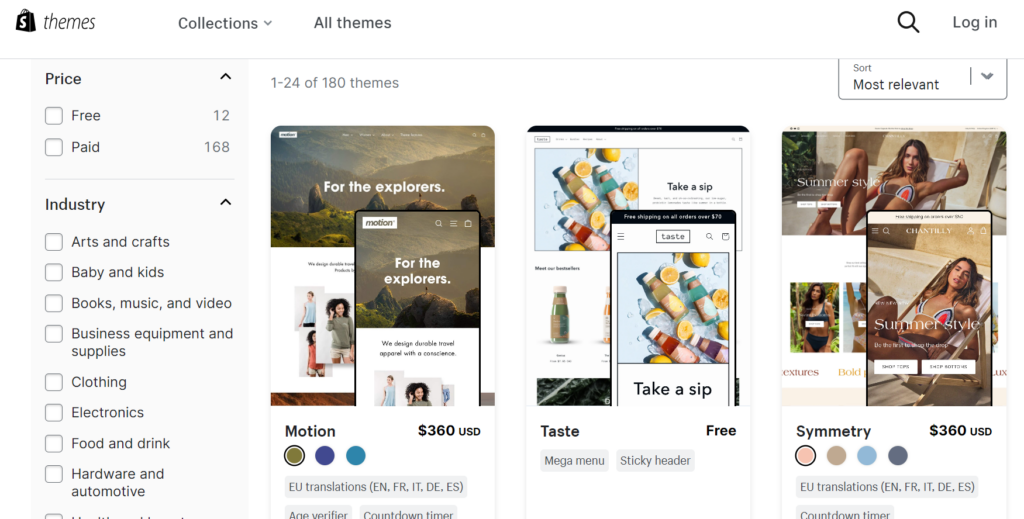Last updated on February 26th, 2024 at 08:55 am
Dropshipping has become an increasingly popular business model for aspiring entrepreneurs and online sellers worldwide.
With dropshipping, you can start an online store and sell products without keeping inventory or shipping orders yourself.
Instead, when you get an order, you purchase the item from a third-party supplier or manufacturer, who then ships it directly to your customer for you.
This allows you to run an online retail business without all the hassle of stocking inventory or packing and shipping orders.
Dropshipping in South Africa is appealing for several reasons:
- Low startup costs – You don’t have to invest in buying products upfront to stock your own inventory. This removes a huge upfront cost.
- Easy to scale – You can add new products to your store instantly. As you start receiving more orders, you simply order more inventory from suppliers. There’s no limit to how many products you can sell.
- Less risk – With lower startup costs and no upfront inventory purchases, you reduce your financial risk if your store isn’t immediately successful.
With the rise of ecommerce platforms like Shopify, launching your own dropshipping store is easier than ever.
In this guide, we’ll walk through how dropshipping with Shopify works, tips for success, and resources to help you get started with your own dropshipping business selling to customers in South Africa.

Table of Contents
Benefits of Dropshipping in South Africa
Dropshipping provides some unique advantages for online sellers in South Africa looking to start an ecommerce business.
Here are some of the key benefits to consider:
Low Barriers to Entry
The startup costs for a dropshipping business in South Africa are much lower compared to traditional retail models.
You don’t have to invest in purchasing inventory upfront.
With Shopify and Oberlo, you can get started with a fully functional
This makes dropshipping ideal for South Africans looking to start an online business on a budget.
Easy Scalability
With the low startup costs, it’s easy to scale a dropshipping store.
You can rapidly add new products to your Shopify store without having to buy and store that inventory.
As your marketing efforts generate more sales, you simply purchase more inventory from suppliers.
This on-demand fulfillment model allows your business to efficiently scale up or down.
Less Overhead Costs
Without a warehouse or storefront, your overhead costs are far lower.
You also don’t have expenses related to purchasing, storing and managing inventory before you make sales.
With Shopify dropshipping in South Africa, you mostly pay small per-order fulfillment fees.
This frees up cash flow to focus more on marketing your products.
Access to Global Suppliers
One of the biggest benefits of Shopify dropshipping for South Africans is easy access to international, usually Chinese, suppliers.
This gives you a vast selection of trendy products that are often unavailable or expensive to buy in South Africa.
Sourcing globally allows you to capitalize on the latest trending products.
Lower Shipping Costs
Having suppliers fulfill orders directly from China to customers often reduces shipping costs compared to shipping bulk inventory to South Africa.
Lower shipping costs mean you can keep product prices competitive.
Less Risk
With no upfront inventory purchases, your financial risk is much lower with a dropshipping model.
If a product doesn’t sell well, you simply stop ordering more inventory from suppliers rather than being stuck with excess stock.
This flexibility reduces potential losses if certain products underperform.
How to Get Started with Shopify for Dropshipping in South Africa
Ready to launch your own dropshipping business using Shopify? Here are the steps to take to get your Shopify dropshipping store up and running:
Choose Your Shopify Plan

First, you’ll need to sign up for a Shopify account.
Shopify offers four pricing plans, but when starting out, the Basic Shopify plan at $32/month is generally recommended.
This gives you plenty of features and bandwidth to run your dropshipping store.
You can always upgrade later as your business grows.
Find a Product Niche
One of the keys to succeeding with dropshipping is finding a profitable, in-demand niche for your products.
Research trending product categories and current best-sellers in those niches.
Analyze competitors and look for gaps in the market you can fill.
Popular options include home goods, kitchen gadgets, electronics accessories, beauty products, pet supplies and more.
Resource: Dropship Products South Africans Can’t Get Enough Of
Set Up Your Shopify Store
Customize your online store’s design, theme, logo and branding to match your chosen niche.
Shopify has a range of professional themes and easy customization options.
You can also install apps and integrations at this point to enhance your store’s features and functionality.
Integrate an Inventory Supplier
Use an app like Oberlo to seamlessly integrate with suppliers like AliExpress and import product listings to your Shopify store.
Oberlo simplifies inventory management by automatically syncing product details and order information with your suppliers.
Add Products to Your Store
Browse supplier catalogs like AliExpress and import your chosen products to your Shopify store through Oberlo.
Add appealing product titles, descriptions, images and pricing.
Ensure your product listings match your brand image and target audience.
Set Up Shipping Rates
Configure your shipping zones and rates in Shopify based on where you plan to ship orders to customers.
Common options include free shipping over a minimum order value or flat rates based on location.
With those key steps complete, your Shopify dropshipping store backend in South Africa is ready to launch.
You still need to focus on marketing and driving traffic to attract sales.
But the foundation is set up to efficiently fulfill orders end-to-end as they come in.

Finding Suppliers and Products to Sell for Dropshipping in South Africa
Finding profitable products and reliable suppliers is crucial to succeed with Shopify dropshipping.
Some of the prominent dropshipping suppliers in South Africa are:
- BrandsGateway
- Men’s Republic Distributors
- Calasca, Planet54
- The Scents
- Gadgetgyz.
These suppliers cover a wide range of product categories, making them suitable for different types of dropshipping businesses.
Here are some tips:
Evaluate Supplier Reliability
Stick with established dropshipping suppliers like AliExpress and Oberlo Supply that have a track record of order fulfilment.
Check for indicators like years in business, order volume, product selection size and positive seller feedback.
Reliable suppliers are essential for good customer experiences.
Research Best-Selling Products
Use sites like AliExpress and Oberlo to browse top-selling items and products with many positive reviews.
These have already proven to be popular sellers.
Consider browsing by specific product categories or sorting by orders or revenue to see the biggest winners.
Use Google Trends
Google Trends shows you search volume data for trending keywords and topics.
Look for rising trends around product categories or specific items.
Use this intel to find “hot” products that are spiking in demand right now.
Capitalize on temporarily trending opportunities.
Check Product Demand on Amazon
See what’s selling well on Amazon in your chosen niche by filtering top products and looking at customer reviews.
This helps validate consumer demand and provides keyword inspiration for your own product listings.
Analyze Competitor Stores
See what items competitors are selling and how they market and price those products.
Use their top sellers as inspiration to identify proven winners in your niche.
Just avoid blatantly copying a single store’s entire product catalog.
Choose Smaller Niche Suppliers
In addition to big marketplaces like AliExpress, find smaller suppliers dedicated to a specific niche.
They may offer unique products not available on the major sites.
Just vet their reliability and order fulfilment capacity first.
Order Samples Yourself
Before listing a product for sale, order samples to evaluate quality and shipping times firsthand.
This protects your brand reputation and ensures a good customer experience.
Disqualify suppliers with poor-quality products or shipping.
Negotiate Supplier Discounts
As you drive more sales volume to a reliable supplier, negotiate opportunities like bulk order discounts.
This allows you to increase profit margins on top-selling items over time.
Just make sure the supplier can comfortably handle larger order quantities.
Following this criteria allows you to source an inventory of high-quality, high-demand products that align with current trends and consumer preferences.
Curating a stellar product catalogue is foundational to succeeding with dropshipping.
Setting Up Your Shopify Store for Dropshipping
Setting up your Shopify store properly prepares your dropshipping business for growth. Follow these tips when setting up your Shopify store:
Choose a Theme

Pick an aesthetic theme that appeals to your target audience and matches your brand image.
Avoid overly busy or distracting themes. Opt for clean, modern designs on mobile and desktop.
The “Debut” theme is a popular starting point.
Set Up Payment Gateways
Activate payment options like PayPal, Stripe and additional options based on your region.
This makes the checkout process easy and trustworthy for customers.
Offer multiple payment methods to improve conversion rates.
Create Product Pages
Optimize individual product pages with detailed descriptions, image galleries, technical specs, sizing information, shipping details, and more.
Include keywords in the titles and descriptions.
This builds trust and helps customers make informed buying decisions.
Write Descriptive Product Titles
Include important keywords in your product titles, but make them conversational using phrases like “Stylish Blue Cotton T-Shirt”, not just “Blue T-Shirt”.
Aim for titles under 60 characters.
Clear, clickable titles improve click-through rates.
Add an Email Capture Form
Install a popup or sticky email capture form to start building an email list from visitors.
This allows you to start email marketing campaigns to drive repeat business.
Many apps integrate with email services like MailChimp.
Display Trust Badges
Improve trust and credibility by displaying security and reputation badges like Norton Secured, BBB Accredited, and TrustedSite.
These signal to customers that your store is safe and legitimate.

Set Up Analytics Tracking
Properly configure Google Analytics to monitor key eCommerce metrics like sales, conversion rates, top products, traffic sources and more.
Analytics provides the data to optimize your marketing and buying decisions.
Enable Abandoned Cart Recovery
Apps like CartHook can automatically email customers who abandon their cart reminding them to complete their purchase.
This “retargets” customers who showed buying intent already.
With these best practices set up from the start, your Shopify dropshipping store will operate more smoothly as order volume grows.
Continue optimizing your store over time as you gain more customer data and experience running your business.
Marketing Your Dropshipping Store for Success
Driving consistent traffic and sales requires strategic marketing for your Shopify dropshipping store. Here are some proven marketing tactics to focus on:
SEO – Optimize for Product Keywords
Perform keyword research using tools like Google Keyword Planner to identify low competition but high demand product keywords with decent search volume in your niche.
Optimize your product pages and blog content around these terms.
This attracts organic search traffic from people looking for those products.
Content Marketing – Inform and Engage
Publish blog posts and videos that provide value for potential customers considering your types of products.
Useful “how to use” articles and buyer’s guides build trust and get people navigating your site.
Promote new content on social media.
Email Marketing – Offer an Incentive
Offer a lead magnet like a coupon code or ebook in exchange for emails to build your subscriber list.
Send occasional promotional emails but focus on providing value like insider tips or exclusive deals for subscribers.
Respect inbox etiquette.
Social Media – Showcase Products Visually
Post engaging social content like behind-the-scenes, product demos or user-generated images showcasing your products on platforms like Instagram and Facebook.
Use relevant hashtags and tagging to reach interested followers.
Retargeting Ads – Remarket Abandoned Carts
Install the Facebook pixel to create custom audiences and remarket to people who visited your store or started checking out.
Retargeting brings previous traffic back and boosts conversions.
Affiliate Marketing – Pay for Performance
Recruit influencers and other publishers to promote your products as an affiliate and pay them a commission on each referral sale they drive.
This only costs you money when affiliates generate real sales.
SMS/Messenger Marketing – High Open Rates
Collect mobile numbers to connect with customers via SMS/text message marketing.
The open rates are extremely high for SMS vs. email.
Send occasional promo alerts this way.
Diversifying your marketing across multiple channels will generate more consistent traffic as some efforts build momentum faster than others.
Remember to analyze each channel’s ROI and double down on the highest converting marketing activities over time.
Key Takeaways
- Shopify Dropshipping in South Africa allows entrepreneurs to start an online retail business without large upfront inventory costs.
- Suppliers fulfill orders directly to customers, avoiding the need to hold inventory or invest in warehousing.
- With Shopify and Oberlo, launching a dropshipping store takes just a few steps.
- Finding a profitable, high-demand product niche is crucial for dropshipping success. Do thorough product research.
- Proper store setup, like theme, payment methods and trust badges, optimizes the buying experience.
- Diversified marketing across channels like email, SEO and social media is needed to drive consistent traffic and sales.
- Dropshipping offers low startup costs and risk for South Africans wanting to break into ecommerce.
- Leveraging global Chinese suppliers provides access to a huge variety of products.
- Focus on providing excellent customer service and streamlined fulfillment to succeed.


